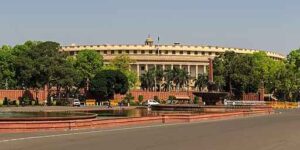
The Indian government started a key program called Pradhan Mantri Awas Yojana – Urban (PMAY-U) on June 25, 2015. This program, managed by the Ministry of Housing and Urban Affairs, aims to provide sturdy homes to people in cities, especially those with low incomes or living in slums, by 2022, which marked 75 years of India’s independence.
The Pradhan Mantri Awas Yojana (Urban) initiative was unveiled with an objective to ensure everyone in urban locales has a home by 2022. Central support is given to the agencies responsible for execution via States/Union Territories (UTs) and Central Nodal Organizations for the goal of providing approximately 1.12 crore homes to qualified recipients based on the validated housing demand. According to the guidelines of PMAY(U), a house intended for the Economically Weaker Section (EWS) can have a maximum carpet area of 30 sq. mt. Yet, States/UTs are given the liberty to increase the house size upon the Ministry’s consent and discussion.
Building on the government’s commitment to bolstering the status of women from EWS and LIG categories, unlike previous programs, PMAY (U) mandates that the home should be in the name of the female head or at least have her as a co-owner. This is a core aspect of the PMAY (Urban) program. A variety of alternatives is employed to incorporate a larger group of individuals based on their earnings, financial resources, and land accessibility through these four methods.
- In-situ Slum Redevelopment (ISSR)
- Credit Linked Subsidy Scheme (CLSS)
- Affordable Housing in Partnership (AHP)
- Beneficiary-led Individual House Construction/ Enhancement (BLC-N/ BLC-E)
Let us see the above points in detail:
-
In-situ Slum Redevelopment (ISSR)
The Central Government will provide Rs. 1 lakh for each house constructed for people living in slums when it’s a project that uses the land with the help of private companies. Once these slums are upgraded, the state government is advised to no longer label them as “slum” per their rules.
States and cities can also use this funding for other slum projects. To make these projects financially attractive, they might offer more Floor Space Index (FSI) or Floor Area Ratio (FAR) or provide Transfer of Development Rights (TDR) to the developers. If the slum is on private land, the state or city will give additional FSI/FAR or TDR to the landowner based on their policies. But in these cases, the central government won’t contribute any funds.
People from EWS (Economically Weaker Section), LIG (Low Income Group), MIG-I (Middle Income Group-I), and MIG-II (Middle Income Group-II) who are getting home loans from banks and other finance companies for buying, building, or improving* houses can get a discount on their interest rate. EWS and LIG get a 6.5% discount for loans up to Rs. 6 Lakh. MIG-I gets 4% off for loans up to Rs. 9 Lakh, and MIG-II gets 3% off for loans up to Rs. 12 Lakh.
HUDCO (Housing and Urban Development Corporation), NHB (National Housing Bank), and SBI (State Bank of India) have been chosen by the Ministry as CNAs (Central Nodal Agencies). Their job is to make sure this discount reaches the right people through the lending institutions and to monitor how things are going. The special scheme for MIG groups is available until 31st March, 2021.
The CLAP portal helps make the process under the CLSS (Credit Linked Subsidy Scheme) smoother and has also helped the Ministry handle complaints better.
-
Affordable Housing in Partnership (AHP)
The Indian Government gives Rs. 1.5 Lakh for each house meant for EWS (Economically Weaker Section) under the AHP (Affordable Housing Project). A housing project can have homes for different groups of people, but it will get this money only if at least 35% of the homes are for the EWS group. The state and local governments set a maximum selling price for these EWS houses to ensure they are affordable for the people they are intended for. Additionally, states and cities might offer more help, like land at cheaper rates, no stamp duty, and other benefits.
-
Beneficiary-led Individual House Construction/ Enhancement (BLC-N/ BLC-E)
Central Assistance upto Rs. 1.5 lakh per EWS house is provided to eligible families belonging to EWS categories for individual house construction/ enhancement. The Urban Local Bodies validate the information and building plan submitted by the beneficiary so that ownership of land and other details like economic status and eligibility can be ascertained. Central Assistance, along with State/UT/ ULB share, if any, is released to the bank accounts of beneficiaries through Direct Benefit Transfer (DBT) by States/UTs.
image credit:
https://commons.wikimedia.org/wiki/File:New_Delhi_government_block_03-2016_img3.jpg
